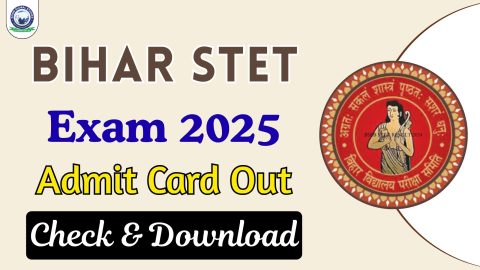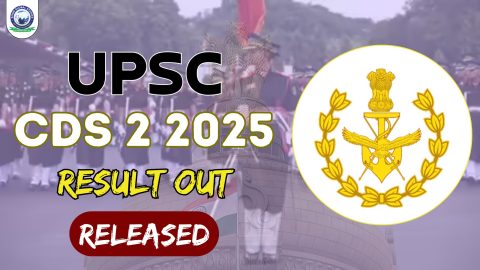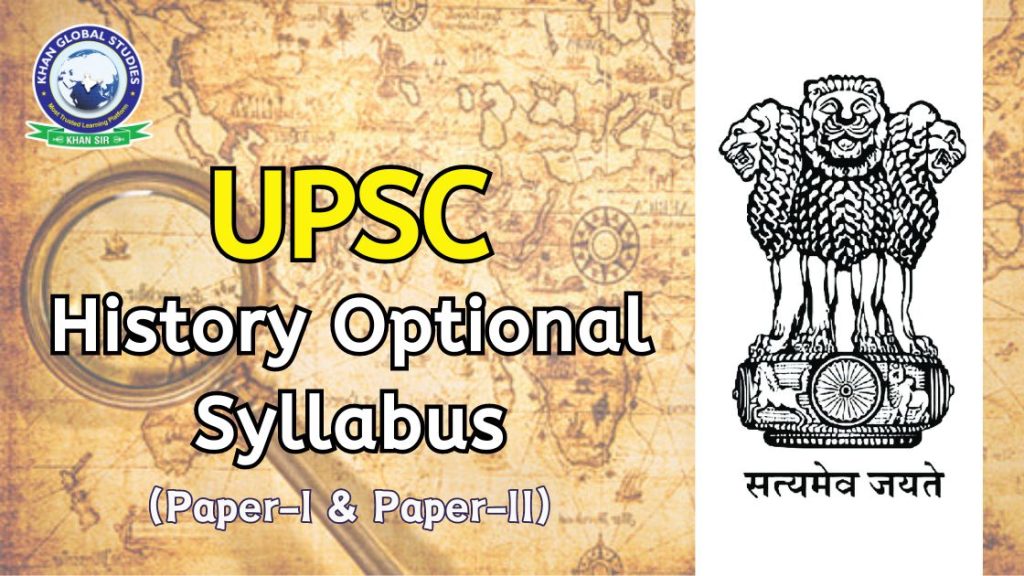UPSC History Optional syllabus covers a wide range of subjects including ancient, medieval and modern history, both Indian and World. Candidates are expected to analyze historical sources, critically evaluate different viewpoints, and develop a comprehensive understanding of various historical processes. The topic demands a combination of factual knowledge and analytical skills.
UPSC History optional syllabus provides an in-depth exploration of historical events, periods and topics. By choosing History as an optional subject, you have the opportunity to delve into the rich tapestry of human history and showcase your ability to engage with complex narratives and make connections between historical events and wider social changes.
UPSC History Optional Syllabus
UPSC History syllabus is designed to provide candidates with a comprehensive understanding of historical events, developments and interpretations. It covers a wide range of subjects covering ancient, medieval and modern periods, both Indian and world history.
UPSC History optional syllabus includes subjects like political history, social and economic change, cultural interaction and regional dynamics. Candidates are expected to engage critically with historical sources, historiography, and diverse historical perspectives. They will discuss topics such as ancient civilizations, medieval empires, colonialism, nationalist movements and post-independence developments.
UPSC History Optional Syllabus: Paper I
1. Source Archaeological Sources:
- Exploration, Excavation, Epigraphy, Numismatics and Monuments
- literary sources
- Swadeshi: Primary and Secondary; Poem; scientific literature; Literature in regional languages; Religious literature.
- Foreign Accounts: Greek, Chinese and Arab writers
2. Prehistoric and Proto-History:
- Geographical factors; Hunting and gathering (Paleolithic and Mesolithic); Beginning of agriculture (Neolithic and Chalcolithic).
3. Indus Valley Civilization:
- Origin, date, expansion, characteristics-necessity, existence and importance, art and architecture.
4. Megalithic Cultures:
- Spread of pastoral and agricultural cultures outside the Indus, development of community life, settlements, agriculture, crafts, pottery and iron industry.
5. Aryan and Vedic Period:
- Expansion of Aryans in India
- Vedic period: religious and philosophical literature; Change from the Rigvedic period to the later Vedic period; Political, social and economic life; Importance of Vedic era; Development of monarchy and caste system.
- See also: Arrival of the Indo-Aryans in the Early Vedic period
6. Period of Mahajanapadas:
- Formation of states (Mahajanapada): Republics and monarchies; the rise of urban centres; trade routes; Economic Development; Introduction of Coinage; spread of Jainism and Buddhism; Magadha and rise of Nandas.
- The Iranian and Macedonian invasions and their impact.
7. Maurya Empire:
- Establishment of the Maurya Empire, Chandragupta, Kautilya and Arthashastra; Ashoka; Concept of religion; order; Polity, Administration, Economy; art, architecture and sculpture; external contact; Religion; spread of religion; Literature.
- The Disintegration of the Empire; Shunga and Kanva.
8. Post-Mauryan period (Indo-Greek, Shaka, Kushan, Western Satraps):
- Contact with the outside world; Development of urban centres, economy, coinage, development of religions, Mahayana, social conditions, art, architecture, culture, literature and science.
9. Early State and Society in Eastern India, Deccan and South India:
- Kharavela, Satavahana, Tamil kingdoms of the Sangam era; Administration, economy, land grants, coinage, trade unions and urban centres; Buddhist Centre; Sangam literature and culture; Art and Architecture.
10. Gupta, Vakataka and Vardhana:
- Politics and administration, economic conditions, coinage of the Guptas, land grants, decline of urban centres, Indian feudalism, caste system, status of women, education and educational institutions; Nalanda, Vikramshila and Vallabhi, literature, scientific literature, art and architecture.
11. Regional states during the Gupta period:
- Kadambas, Pallavas, Chalukyas of Badami; Polity and Administration, Trade Union, Literature; Development of Vaishnavism and Shaivism.
- Tamil Bhakti movement, Shankaracharya; Vedanta; Institute of Temples and Temple Architecture; Palas, Senas, Rashtrakutas, Paramaras, politics and administration; cultural aspects.
- Arab conquest of Sindh; Chalukyas like Alberuni, Kalyana, Cholas, Hoysalas, and Pandyas; Polity and Administration; local government; Development of art and architecture, religious sects, institution of temples and monasteries, Agraharas, education and literature, economy and society.
12. Topics of Early Indian Cultural History:
- Languages and texts, major stages of development of art and architecture, major philosophical thinkers and schools, ideas in science and mathematics.
13. Early Medieval India, 750-1200:
- Polity: Major political developments in Northern India and the Peninsula, origin and rise of the Rajputs.
- Cholas: Administration, Rural Economy and Society “Indian Feudalism”.
- Agricultural Economy and Urban Settlements.
- Trade and Commerce.
- Society: Status of Brahmin and new social system.
- Position of Women.
- Indian Science and Technology.
14. Cultural Traditions in India, 750-1200:
- Philosophy: Shankaracharya and Vedanta, Ramanuja and Vishishtadvaita, Madhva and Brahmamimamsa.
- Religion: Nature and characteristics of religion, Tamil Bhakti cult, Development of Bhakti, Islam and its arrival in India, Sufism.
- Literature: Literature in Sanskrit, Development of Tamil literature, Literature in new developing languages, Kalhana’s Rajatarangini, Alberuni’s India.
- Art and Architecture: Temple Architecture, Sculpture, Painting.
15. 13th Century:
- Establishment of Delhi Sultanate: Ghurian invasion – Factors behind the success of Ghurian.
- Economic, social and cultural consequences.
- Establishment of the Delhi Sultanate and the early Turkish Sultans.
- Consolidation: Rule of Iltutmish and Balban.
16. 14th Century:
- Khilji Revolution.
- Alauddin Khilji: Conquest and territorial expansion, agriculture and economic measures.
- Muhammad Tughlaq: Major projects of Muhammad Tughlaq, agricultural measures, bureaucracy.
- Firoz Tughlaq: Agricultural measures, achievements in civil engineering and public works, decline of the Sultanate, foreign contacts and description of Ibn Battuta.
17. Society, Culture and Economy in the 13th and 14th centuries:
- Society: Structure of rural society, ruling class, city dwellers, women, religious classes, caste and slavery under the Sultanate, Bhakti movement, Sufi movement.
- Culture: Persian literature, literature in regional languages of North India, literature in languages of South India, Sultanate architecture and development of new structural forms, painting, and overall culture.
- Economy: growth in agricultural production, urban economy and non-agricultural production, trade and Business.
18. 15th and Early 16th Centuries-Political Development and Economy:
- Rise of Provincial Dynasties: Bengal, Kashmir (Zainul Abedin), Gujarat.
- Malwa, Bahmanids.
- Vijayanagara Empire.
- Lodis.
- Mughal Empire, first phase: Babar, Humayun.
- Sur Empire: Administration of Sher Shah.
- Portuguese colonial ventures, Bhakti and Sufi movements.
19. 15th and Early 16th Century- Society and Culture:
- Characteristics of regional cultures.
- Literary traditions.
- Provincial architecture.
- Society, culture, literature and arts in the Vijayanagara Empire.
20. Akbar:
- Conquest and consolidation of the empire.
- Establishment of Jagir and Mansab system.
- Rajput policy.
- Development of religious and social outlook. The principle and religious policy of Sulh-e-Kul.
- Court protection of art and technology.
21. Mughal Empire in the Seventeenth Century:
- Main administrative policies of Jahangir, Shahjahan and Aurangzeb.
- Empire and landlord.
- Religious policies of Jahangir, Shahjahan and Aurangzeb.
- Nature of the Mughal state.
- Crisis and rebellion of the late seventeenth century.
- Ahom Empire.
- Shivaji and the early Maratha Empire.
22. Economy and Society in the 16th and 17th Century:
- Population, agriculture and craft production.
- Trade with Europe through the towns, the Dutch, English and French companies: a trade revolution.
- Indian business class. Banking, insurance and credit systems.
- Status of farmers, the status of women.
- Development of the Sikh community and Khalsa Panth.
23. Culture during the Mughal Empire:
- Persian history and other literature.
- Hindi and religious literature.
- Mughal Architecture.
- Mughal painting.
- Provincial architecture and painting.
- Classical music.
- Science and Technology.
24. 18th Century:
- Factors of the decline of the Mughal Empire.
- Regional princely states: Nizam’s Deccan, Bengal, Awadh.
- Maratha dominance under Peshwas.
- Maratha fiscal and financial system.
- Rise of Afghan Power, Battle of Panipat in 1761.
- State, political, cultural and economic on the eve of the British conquest.
UPSC History Optional Syllabus: Paper-II
1. European entry into India:
Early European settlements; Portuguese and Dutch; the English and French East India Companies; their struggle for dominance; Carnatic War; Bengal-conflict between the British and the Nawabs of Bengal; Siraj and the English; war of Plasi; Importance of Plassey.
2. British Expansion in India:
Bengal-Mir Jafar and Mir Qasim; Battle of Buxar; Mysore; Maratha; Three Anglo-Maratha Wars; Punjab.
3. Initial Structure of the British Raj:
Early administrative structure; From diarchy to direct control; Regulating Act (1773); Pitt’s India Act (1784); Charter Act (1833); The call for free trade and the changing character of British colonial rule; English utilitarians and India.
4. Economic Impact of British Colonial Rule:
(a) Land revenue settlement in British India; permanent settlement; Ryotwadi settlement; Mahalwadi Basti; Economic impact of the revenue system; commercialization of agriculture; the rise of landless agricultural labourers; Poverty of rural society.
(b) displacement of traditional trade and commerce; de-industrialization; decline of traditional crafts; Withdrawal of funds; India’s economic transformation; railroads and communication networks, including telegraph and postal services; famine and poverty in rural areas; European Business Enterprise and Its Limits.
5. Social and Cultural Development:
The state of indigenous education, its disorganization; Orientalist-Anglican controversy, the introduction of Western education in India; the rise of the press, literature, and public opinion; The rise of modern vernacular literature; The progress of science; and Christian missionaries’ activities in India.
6. Social and Religious reform movements in Bengal and other areas:
Ram Mohan Roy, Brahmo Movement; Devendranath Tagore; Ishwarchandra Vidyasagar; Young Bengal Movement; Dayanand Saraswati; Social reform movements in India including Sati, widow remarriage, child marriage etc.; Contribution of Indian Renaissance to the development of modern India; Islamic revivalism-Faraji and Wahhabi movements.
7. Reaction of Indians towards British Rule:
Peasant movements and tribal rebellions in the 18th and 19th centuries including the Rangpur Dhing (1783), Kol rebellion (1832), Moplah rebellion in Malabar (1841–1920), Santhal Hul (1855), Indigo rebellion (1859–60). ), Deccan Rebellion (1875) and Munda Ulgulan (1899–1900); The Great Revolt of 1857 – Origin, Character, Causes of Failure, Results; Changes like peasant rebellion in the period after 1857; Peasant movements of the 1920s and 1930s.
8. Reasons for the birth of Indian Nationalism:
Union politics; Establishment of the Indian National Congress; The safety-valve thesis related to the birth of Congress; Program and objectives of the preliminary congress; the social structure of the early Congress leadership; moderates and extremists; Partition of Bengal (1905); Swadeshi movement in Bengal; Economic and political aspects of the Swadeshi movement; Beginning of revolutionary extremism in India.
9. The Rise of Gandhi; Characteristics of Gandhian Nationalism:
Gandhi’s Popular Appeal; Rowlatt Satyagraha; Khilafat Movement; Non-Cooperation Movement; National politics from the end of the Non-Cooperation Movement to the beginning of the Civil Disobedience Movement; Two phases of Civil Disobedience Movement; Simon Commission; Nehru Report; Round Table Conference; Nationalism and Peasant Movement; Nationalism and the working class movement; Women in Indian politics and Indian youth and students (1885–1947); 1937 elections and formation of ministries; Cripps Mission; Quit India Movement; Wavell Plan; Cabinet Mission.
10. Constitutional Development in colonial India between 1858 and 1935.
11. Other Aspects of the National Movement.
Revolutionary: Bengal, Punjab, Maharashtra, U.P. Outside Madras Presidency, India. Left; Left within Congress: Jawaharlal Nehru, Subhash Chandra Bose, Congress Socialist Party; Communist Party of India, other leftist parties.
12. Politics of separatism:
Muslim League; Hindu Mahasabha; Politics of communalism and division; transfer of power; independence.
13. Strengthening as a nation:
Nehru’s foreign policy; India and its neighbours (1947–1964); Linguistic reorganization of states (1935–1947); Regionalism and regional inequality; Unification of princely states; Prince in electoral politics; Question of national language.
14. Caste and ethnicity after 1947:
Backward castes and tribes in post-colonial electoral politics; Dalit movement.
15. Economic Development and Political Change:
Land Reform; The politics of planning and rural reconstruction; Ecology and Environmental Policy in Post-Colonial India; Progress of science.
16. Enlightenment and Modern Thought:
(i) Major ideas of Enlightenment: Kant, Rousseau.
(ii) Diffusion of knowledge in the colonies.
(iii) Rise of socialist ideas (up to Marx); Spread of Marxist socialism.
17. Origin of Modern Politics:
(i) European State System.
(ii) American Revolution and Constitution.
(iii) The French Revolution and its consequences, 1789-1815.
(iv) the American Civil War and the abolition of slavery by Abraham Lincoln.
(v) British democratic politics, 1815-1850: Parliamentary reformers, free traders, Chartists.
18. Industrialization:
(i) English Industrial Revolution: Causes and effects on society.
(ii) Industrialization in other countries: United States of America, Germany, Russia, Japan.
(iii) Industrialization and globalization.
19. Nation-State System:
(i) Rise of nationalism in the 19th century.
(ii) Nationalism: State-building in Germany and Italy.
(iii) Disintegration of empires in the face of the emergence of nationalities across the world.
20. Imperialism and Colonialism:
(i) South and South-East Asia.
(ii) Latin America and South Africa.
(iii) Australia.
(iv) Imperialism and Free Trade: Rise of Neo-Imperialist.
21. Revolution and Counter-Revolution:
(i) European revolutions of the 19th century.
(ii) Russian Revolution of 1917-1921.
(iii) Fascist counter-revolution, Italy and Germany.
(iv) Chinese Revolution of 1949.
22. World War:
(i) First and Second World Wars as total wars: Social implications.
(ii) First World War: Causes and consequences.
(iii) Second World War: Causes and consequences.
23. World after World War II:
(i) Emergence of two power groups.
(ii) Rise of the Third World and non-alignment.
(iii) UNO and global disputes.
24. Freedom from Colonial Rule:
(i) Latin America-Bolivar.
(ii) Arab World-Egypt.
(iii) Africa – from apartheid to democracy.
(iv) South-East Asia-Vietnam.
25. Colonization and under Development:
(i) Factors hindering development; Latin America, Africa.
26. Integration of Europe:
(i) Post-war foundation; NATO and the European Community.
(ii) Integration and enlargement of the European Community.
(iii) European Union.
27. Disintegration of the Soviet Union and rise of the Unipolar World:
(i) Soviet communism and the factors leading to the collapse of the Soviet Union, 1985–1991.
(ii) Political change in Eastern Europe 1989–2001.
(iii) End of the Cold War and dominance of America as the sole superpower in the world.
Important topics in the UPSC History Optional Syllabus
UPSC History syllabus covers a wide range of topics related to Ancient, Medieval and Modern History. Some important topics include:
Ancient India:
- Indus Valley Civilization
- Vedic period
- Maurya and Gupta Empire
- religious and cultural development
Medieval India:
- Delhi Sultanate
- Mughal Empire
- Sufism and Bhakti movement
- Rise of regional states
Modern India:
- Colonialism and British rule
- Revolt of 1857
- Indian National Movement
- partition and independence
World History:
- Industrial Revolution
- French revolution
- World wars and their effects
- Cold War and Colonization
Art and Culture:
- Architecture, sculpture and painting styles
- Classical Dance and Music Styles
- literature and language development
Historical Interpretations:
- Study different historians’ perspectives on important events and periods.
India after Independence:
- Socio-economic change
- Political development
- Land reforms and economic policies
Globalization and its impact:
- Understanding contemporary challenges and their historical roots.
Note: Remember that although these topics are important, a comprehensive understanding of the syllabus is essential. Focus on connecting historical events to broader trends and analyzing the impact of historical processes on current situations.
Tips to prepare History syllabus for UPSC 2024
- Understand the syllabus: Start by reading and understanding the UPSC syllabus for History thoroughly. This will give you a clear idea of the topics and subtopics that you need to cover. Pay attention to the importance given to different periods, subjects, and areas of study.
- Read NCERT Books: Start your preparation by reading NCERT (National Council of Educational Research and Training) books for History from classes 6 to 12. NCERT books provide a solid foundation and concisely cover basic concepts and topics.
- Make Notes: Make concise and organised notes while studying. Write down important facts, dates, events, and key concepts. These notes will serve as quick revision material closer to the exam and help you remember important points.
- Analyze Previous Years’ Question Papers: Go through previous years’ question papers of the UPSC exam and analyze the pattern and type of questions asked from the History section. This will let you know about the expectations of the examiners and help you prioritize your preparation accordingly.
- Focus on conceptual understanding: Rather than memorizing facts and dates, focus on understanding the concepts, causes, and consequences of historical events. Develop a holistic understanding of the topic by linking different periods and topics together.
- Practice Answer Writing: History is a topic that requires effective presentation skills. Practice writing answers regularly to improve your writing style, coherence and clarity. Work on structuring your answers, providing relevant examples, and including a historical perspective.
- Stay Updated: Keep yourself updated with current events, especially those related to history. Read newspapers, magazines, and online sources to keep informed about recent archaeological discoveries, historical debates, and new interpretations of historical events.
- Revision Regularly: Allot enough time for regular revision. Revise your notes, important dates and key concepts frequently to ensure knowledge retention.



